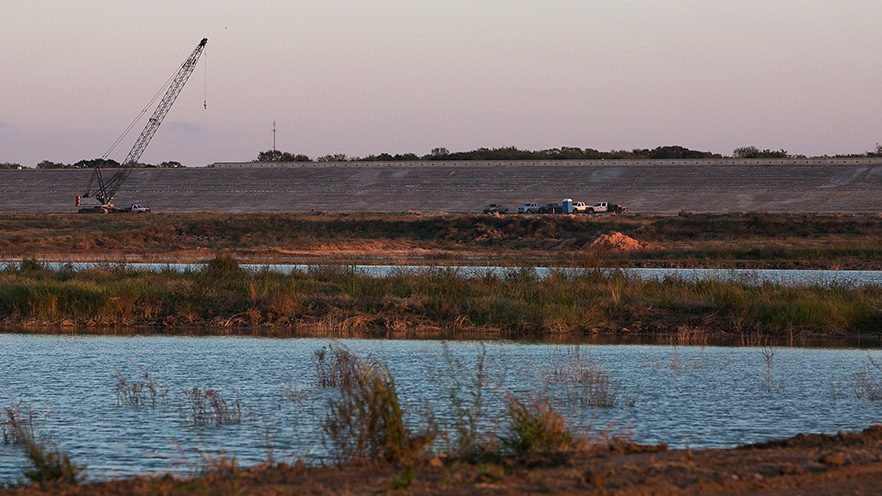Projects for New Water Supply

Arbuckle Reservoir
LCRA is building the Arbuckle Reservoir off the main channel of the Colorado River in Wharton County. This is the first significant new water supply reservoir developed in the lower Colorado River basin in decades.
The reservoir could add up to 90,000 acre-feet of water to the region’s supply. It is the first project that will allow LCRA to capture and store significant amounts of water downstream of the Highland Lakes.
The new reservoir will benefit the entire basin by helping reduce – but not eliminate – the amount of water otherwise required to be released from the Highland Lakes to serve downstream demands, including industrial and agricultural customers. Read the fact sheet. Learn about the history of irrigation and agriculture in the Lane City area.
The project has a current life-time budget of $456 million, partially funded by a Texas Water Development Board bond sale and a grant from the TWDB.
Projected in-service date: summer 2025, subject to available flows in the Colorado River in the lower basin and testing. Due to the ongoing drought and resulting low downstream flows, LCRA was unable to complete the necessary fill/refill testing by the end of 2024 as anticipated.
Project update
In late 2018, LCRA began fill/refill testing after the reservoir embankment was completed. During that testing, LCRA observed groundwater seepage near the site and began a remediation project to extend the barrier wall in June 2019. The barrier wall ranges from about 100 to 175 feet deep and was completed in December 2023.
LCRA is currently conducting fill/refill testing of the reservoir.
Bastrop County groundwater wells
LCRA also added to the region’s water supply by adding four groundwater wells around Lake Bastrop in Bastrop County. The project allows LCRA to pump up to 10,000 acre-feet of water a year, under certain conditions, to provide cooling water for LCRA’s Lost Pines Power Park.
LCRA also owns the groundwater rights associated with the 5,000-acre Griffith League Boy Scout Ranch in Bastrop County and is seeking permits to drill up to eight wells for the production of up to 25,000 acre-feet of water when the need arises to meet demands in eastern Travis, Bastrop and Lee counties.
Williamson County return flows
LCRA supplies water to customers in Williamson County, which is in both the Colorado and Brazos river basins. LCRA is considering a project to bring up to 35,000 acre-feet per year of that water back into the lower Colorado River basin in the form of treated wastewater. The return flows would expand the basin’s water supply and help meet the “no net loss” requirement of House Bill 1437.
Mid-basin surface water supply
LCRA is exploring the feasibility of an off-channel storage project in the middle part of the basin. The project has the potential to add about 10,000 acre-feet of water to the region’s supply.
Brackish groundwater
LCRA is researching the use of local brackish groundwater to benefit estuaries along Matagorda Bay. Brackish groundwater could potentially supply the environmentally sensitive areas with water more efficiently than sending water downstream from the Highland Lakes.
Other water projects
LCRA also is exploring the feasibility of using aquifer storage and recovery, desalination, and additional groundwater to increase the region’s water supply and meet the future demands in LCRA’s water service area.
Read more about LCRA’s water supply planning in this Sept. 20, 2023, presentation to the LCRA Board of Directors Water Operations Committee.


Social Media